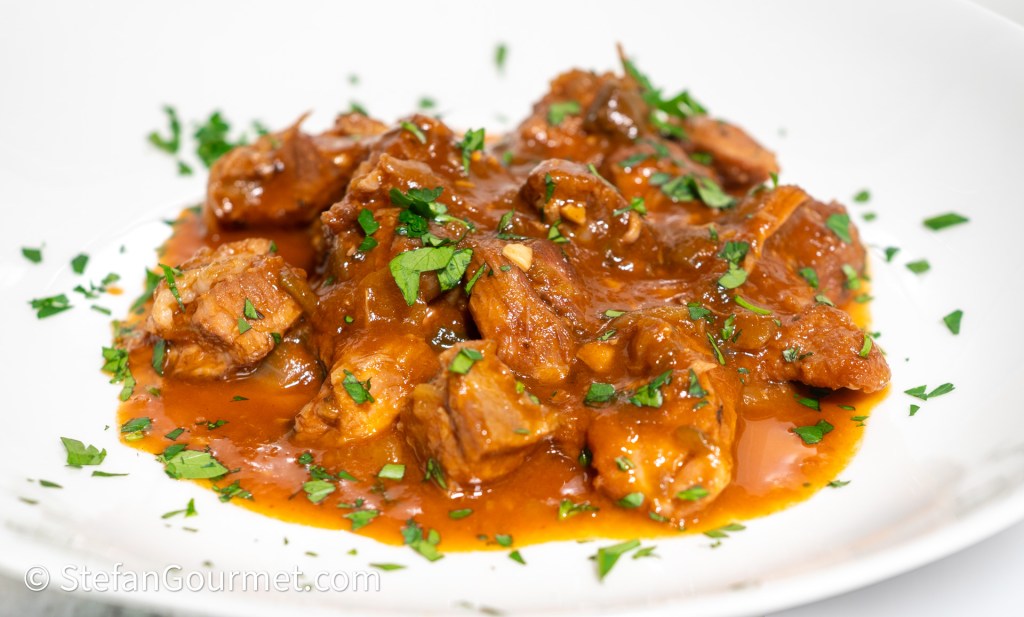
It’s been a while since I’ve prepared a recipe I discovered through another blog. But when I saw Frite de Cordero on Accounting for Taste, I immediately knew I wanted to prepare a sous vide version of it. Frite de Cordero is a traditional Spanish lamb stew for which there are many recipes. The main characteristic is that it is flavored with pimentón, Spanish smoked paprika. Just like Accounting for Taste, I’ve used the recipe from the Spanish newspaper El País as my guide. I like using sous vide for stews, as you don’t have to monitor it, and it will always come out perfect. The recipe calls for boneless lamb shoulder, but since I bought the lamb shoulder with the bone, I used that to make a stock, which I reduced and added to give the dish even more flavor and richness. You could of course omit that extra step, but I think it’s definitely worth it. When making this on the stovetop instead of sous vide, make the lamb stock first, and then use it to cover the meat when stewing it.
Ingredients

Serves 8
- 1.2 kilos (2.6 lbs) boneless and trimmed lamb shoulder, or 2 kilos (4.4 lbs) bone-in lamb shoulder
- 4 garlic cloves, minced
- 2 onions, chopped
- 2 green peppers (medium spicy), chopped
- 200 grams sieved or peeled and diced tomatoes (fresh or canned)
- 1 bay leaf
- 1/2 Tbsp smoked paprika (sweet, spicy, or mixture)
- 1/2 tsp dried oregano
- 1/2 tsp dried thyme
- olive oil
- salt
- 300 ml (1 1/4 cup) white wine
- minced fresh flat leaf parsley, for garnish

For the stock
- bones and trimmings from a lamb shoulder, about 750 grams (1.7 lbs)
- 1/2 onion (about 50 grams)
- 1 garlic clove
- 1 carrot (about 50 grams)
- 1/2 celery stick (about 50 grams)
- 1 bay leaf
- 1/2 tsp black peppercorns
- few thyme sprigs
Instructions

If using a bone-in lamb shoulder, cut the meat from the bone. It is not necessary to do this very neatly, as the meat is going to be diced later anyway. But you do want to get larger pieces as much as possible for easier browning.
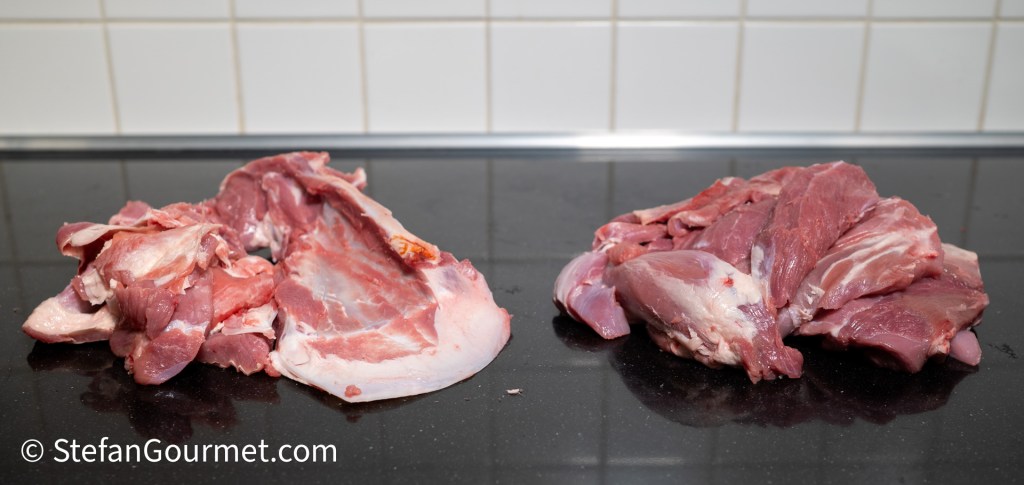
You should also trim the outer layer of fat and connective tissue. Reserve all the bones and trimmings for the stock. You could also ask your butcher to do this for you. I ended up with about 1.25 kilos of meat and 0.75 kilos of bones and trimmings from my 2 kilo lamb shoulder.
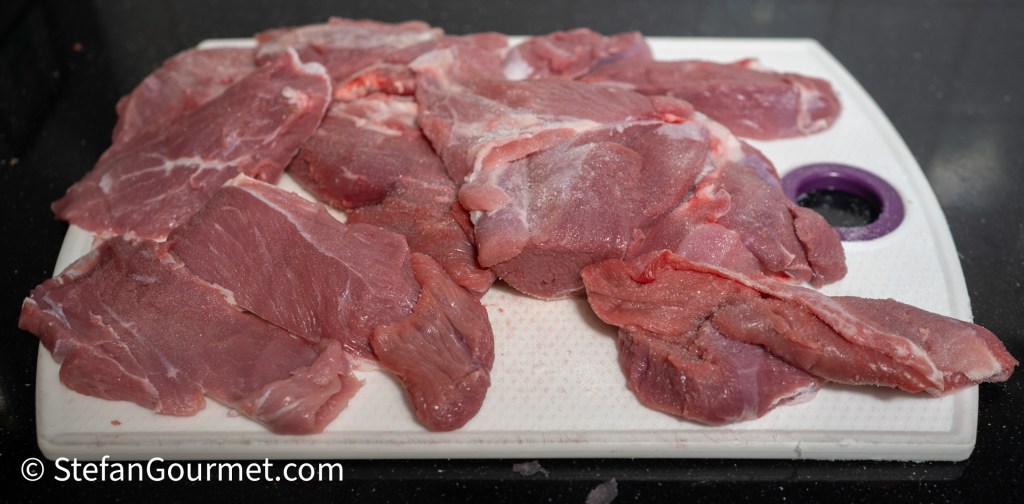
Slice the meat into thick steaks that you can brown easily (not too large, but certainly not too small), and season them with salt. Ideally you then allow the salt to penetrate into the meat for about an hour before continuing, as that will facilitate the browning. But it is not a disaster if you are in a hurry and continue straight away.
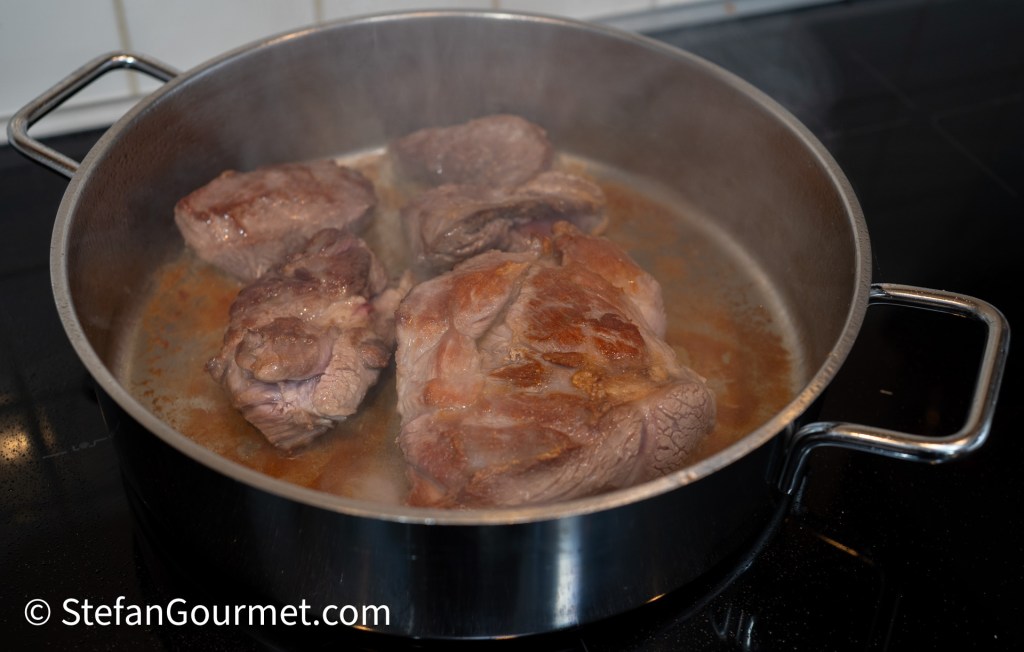
Brown the meat on both sides in a wide, low, thick-bottomed frying pan in olive oil over high heat. If you make the stock first (see below) or you have reserved lamb fat in your freezer from a previous time of making this recipe, it is even better to use that lamb fat for browning the meat. This will greatly enhance the lamb flavor. Of course you should not do that if you don’t like the taste of lamb (but why would you make this recipe then?!). Do not crowd the pan and brown the meat in batches as needed, placing the pieces that are finished on a plate to cool off. Allow the meat to cool off, first to room temperature, and then (covered with plastic wrap) in the refrigerator.
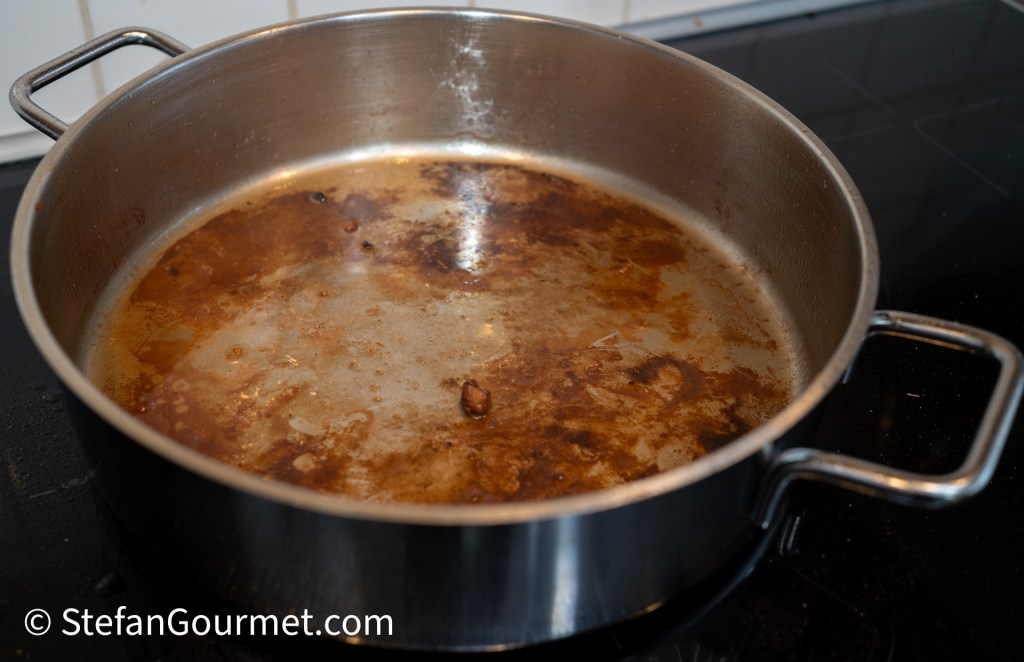
Do not clean the pan after browning the meat, as you want all of the flavor from the drippings to go into your stew.
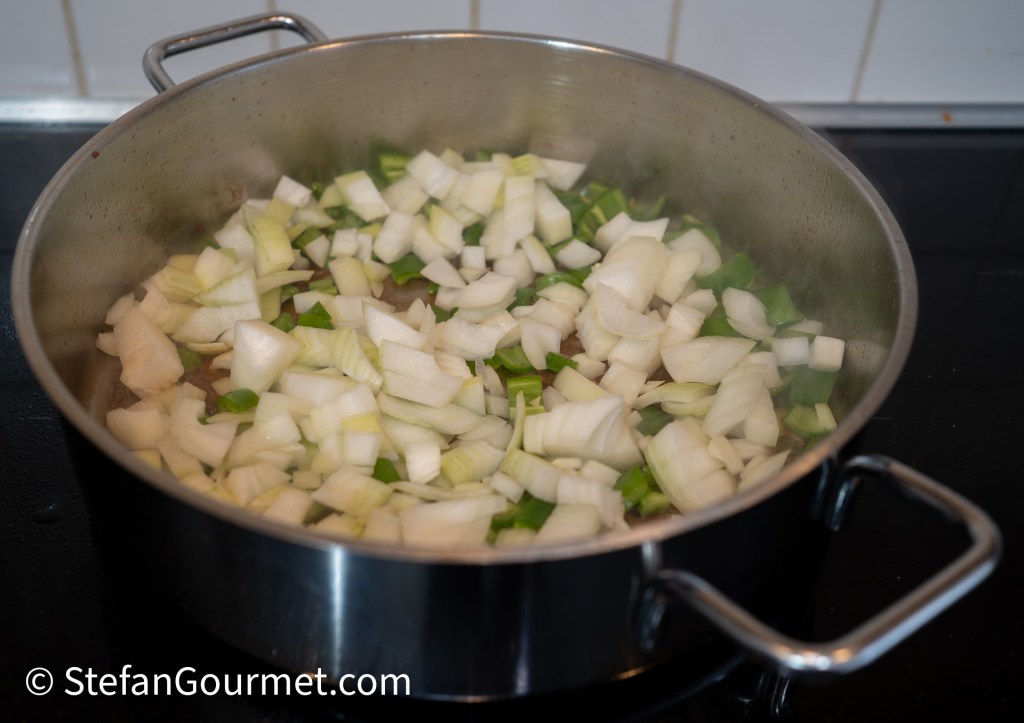
Add the onions and peppers to the pan with the drippings, adding more olive oil if needed. Season with a bit of salt.
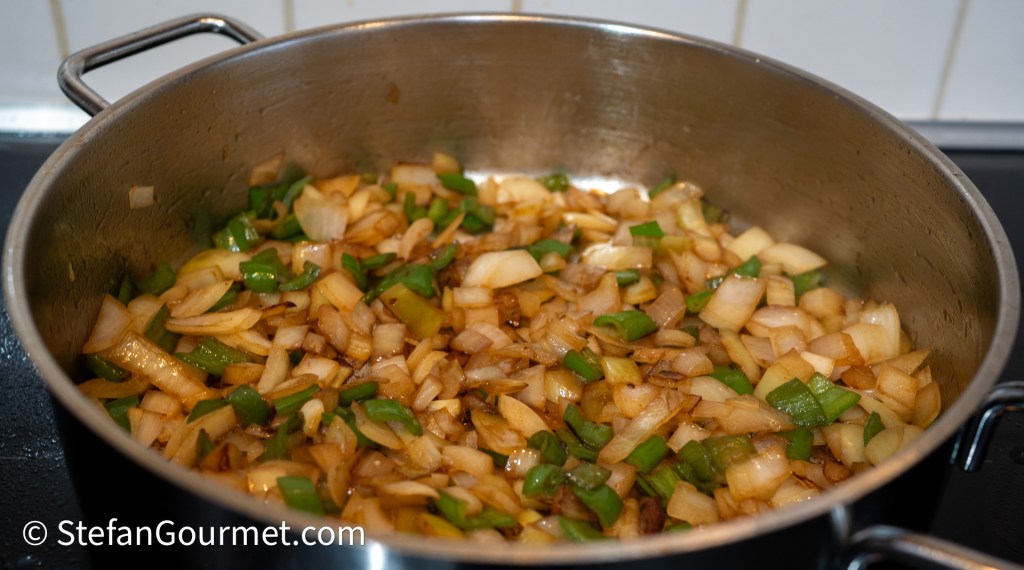
Stir the onions over medium heat, scraping along the bottom with a wooden spatula to release all of the flavor. Keep going until the onions are soft and golden, not crispy or browned, about 10 minutes.
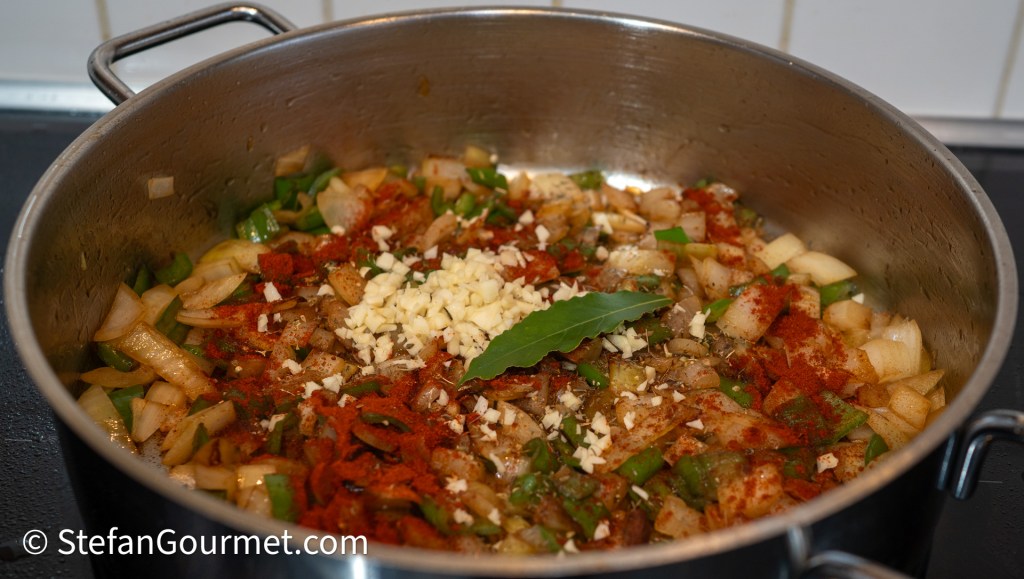
Now add the bay leaf, minced garlic, 1/2 Tbsp of smoked paprika, 1/2 tsp of dried thyme, and 1/2 tsp of dried oregano.
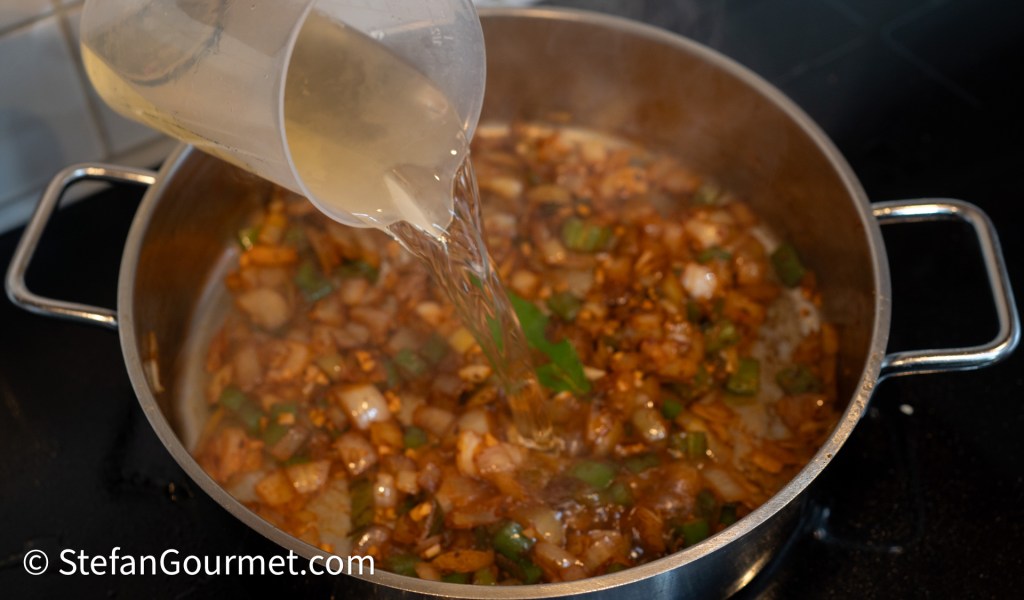
Stir briefly until the garlic starts to color just a little (only very little), and then deglaze the pan with 300 ml of white wine. Allow the wine to reduce over medium-high heat.
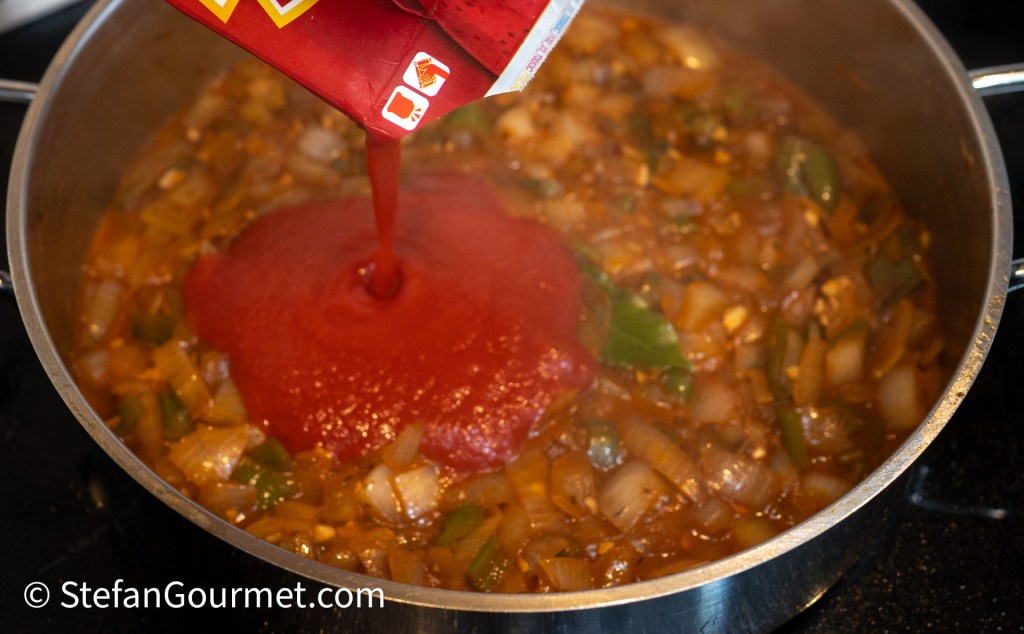
When the wine has been reduced by half, add 200 grams of tomatoes.
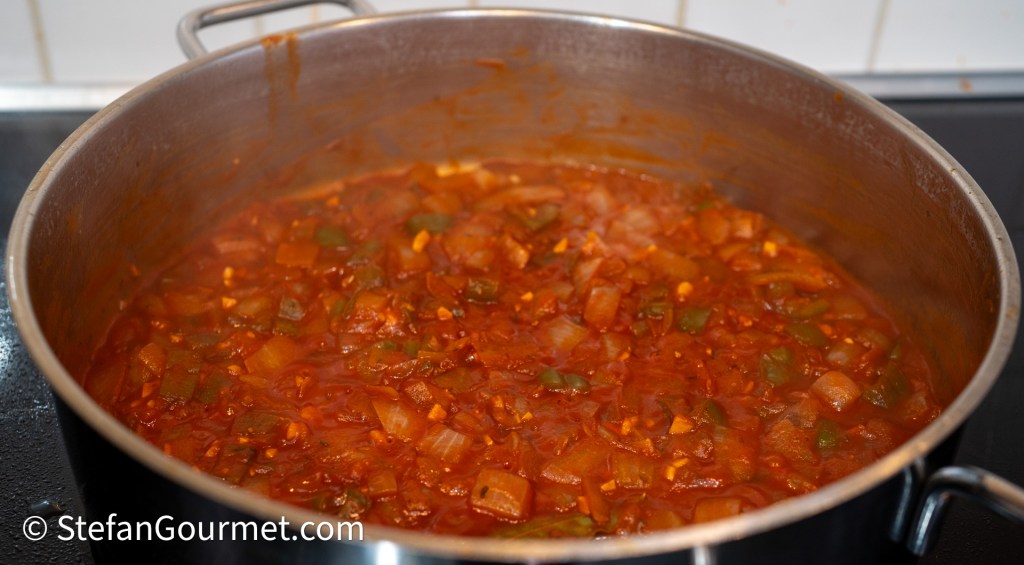
Stir and allow to reduce over medium heat until the sauce has thickened. If you stir, you should not see any water ‘leaking’ from the sauce. Turn off the heat when you’ve reached that state. Taste and adjust the seasoning with salt and spicy smoked paprika.
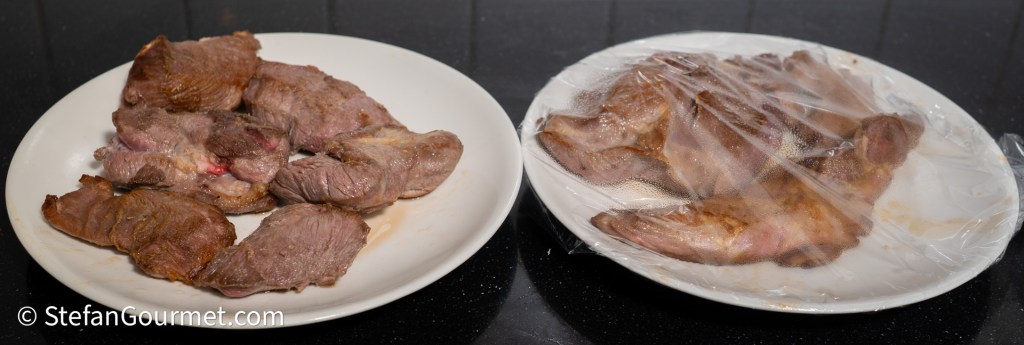
When the meat has been chilled and the sauce has cooled off…
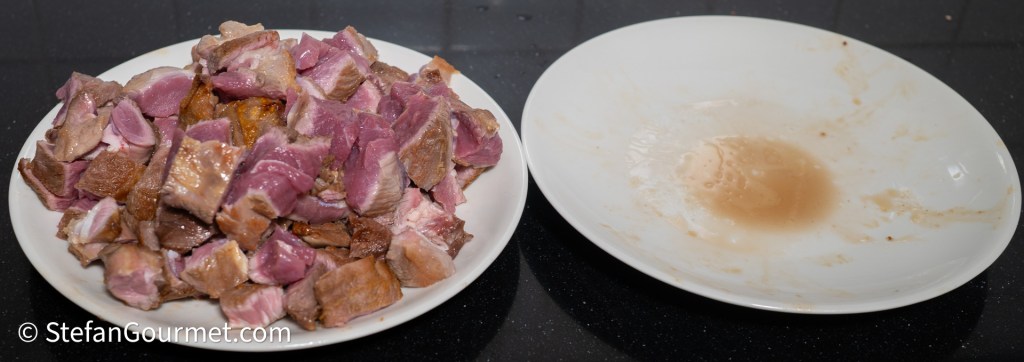
…cut the meat into bite size pieces. The meat should still be raw inside. Add any juices on the plate that have leaked out of the meat to the sauce, as we don’t want to waste any flavor.
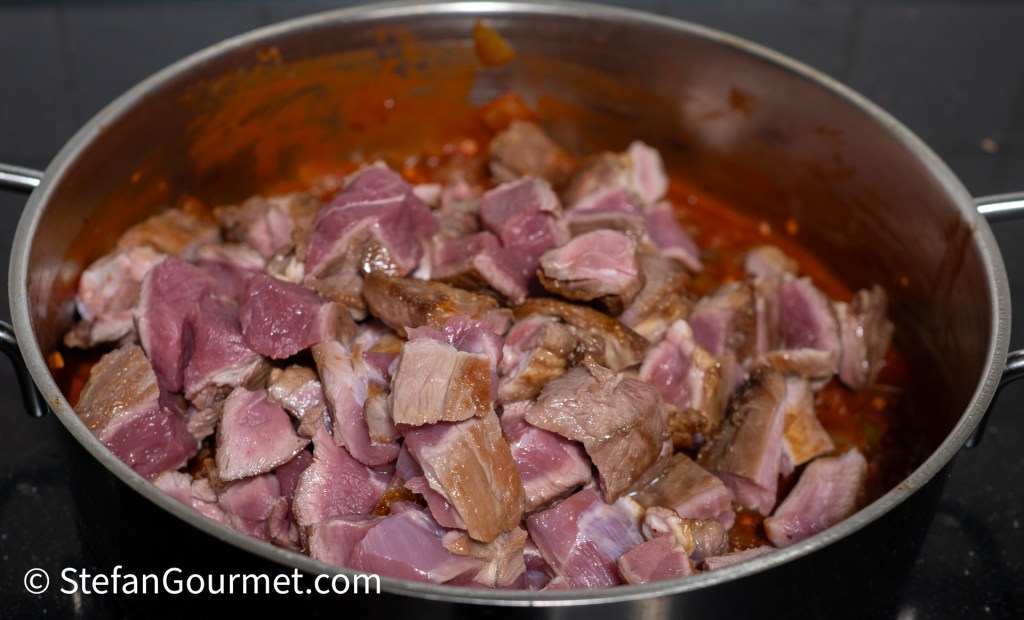
Add the meat to the sauce…
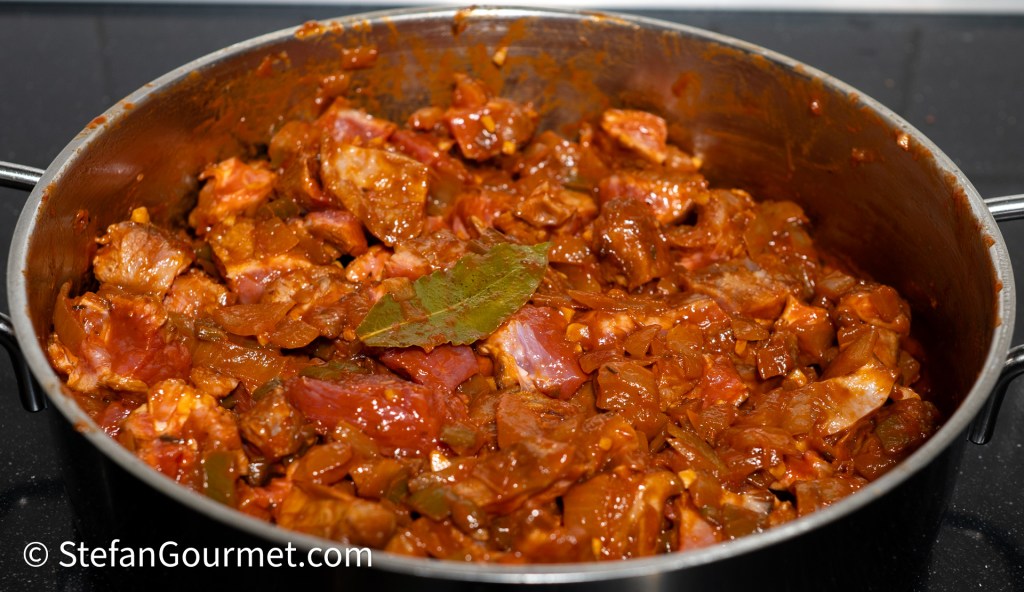
…and stir until it has been mixed well.
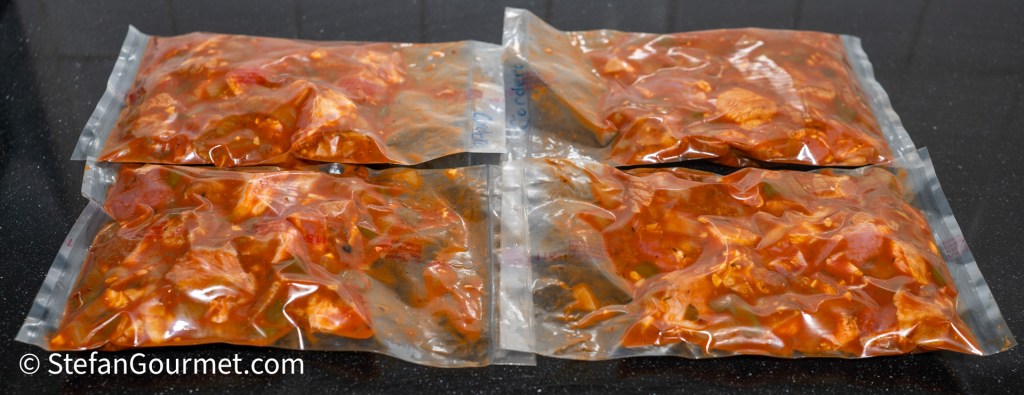
Vacuum seal the meat with the sauce. This is easy with a chamber vacuum machine. If you have an external vacuum sealer, it will probably be necessary to chill the meat with the sauce some more in the refrigerator before you can vacuum seal it without sucking the sauce out of the bag. It is easiest to do this after you’ve transferred the meat with sauce into the bags. Just fold them closed and refrigerate them. (If you left the sauce too thin, you may even have to partially freeze the bags first.)
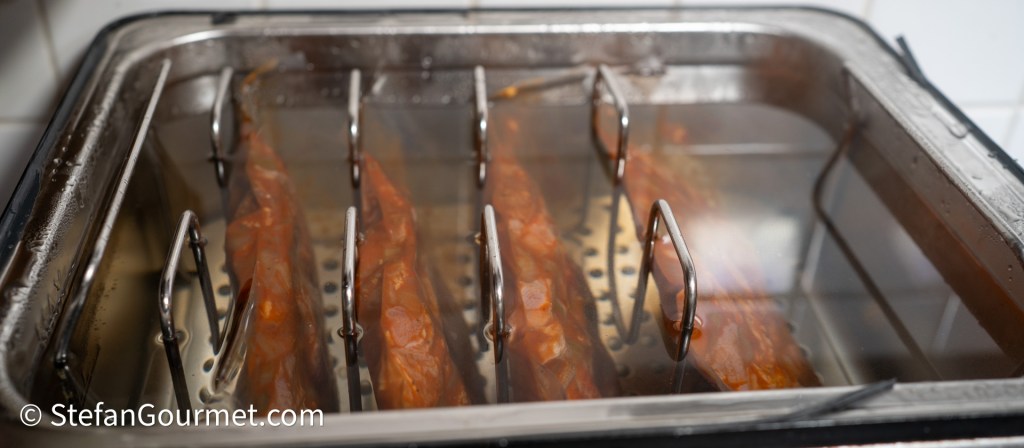
Cook the stew sous vide for 24 hours at 74C/165F or 48 hours at 68C/155F. The latter it slightly better, as the lower temperature leaves the meat a bit more juicy.
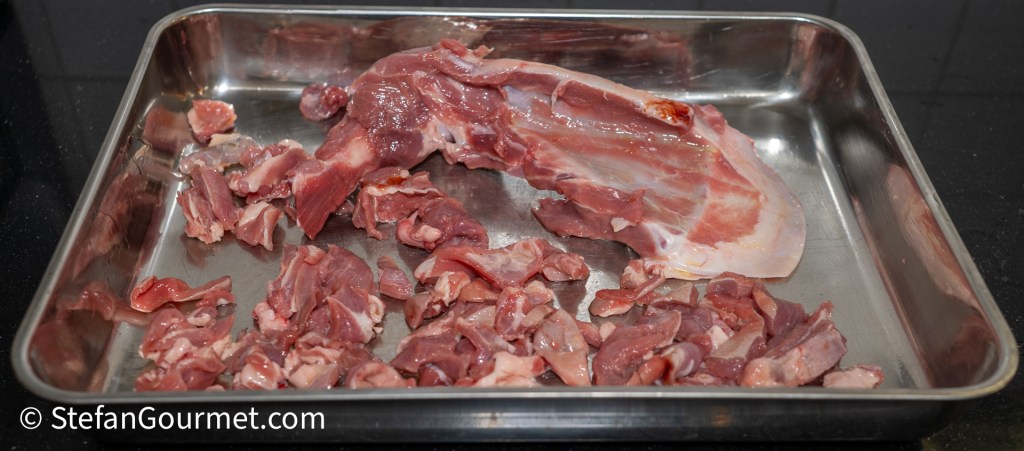
In the meantime, make the stock. Preheat the oven to 190C/375F (fan forced). Chop the trimmings. Rub the trimmings and bones with a bit of olive oil (just enough to get everything shiny). Place them in a roasting tray.
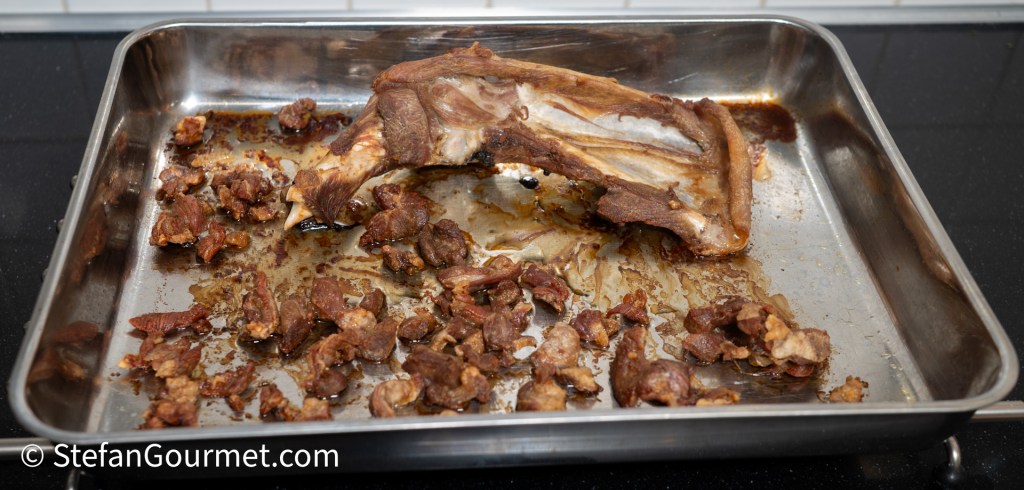
Roast the bones and trimmings in the oven at 190C/375F (fan forced) until they are nicely browned, about 30 minutes. This step is important to get a nice deep flavor.
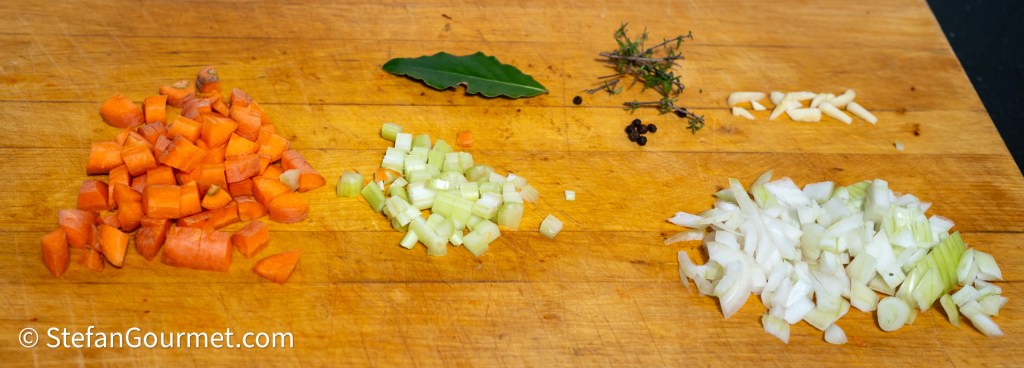
Chop the carrot, onion, celery, and garlic.

Place the roasted trimmings and bones in a pressure cooker or stockpot, and add the carrot, onion, celery, bay leaf, thyme, black peppercorns, and garlic.

Deglaze the roasting tray with 0.5 to 0.75 litres (2 to 3 cups) of boiling water.

Scrape with a wooden spatula to release all of the flavors from the drippings in the roasting pan. It is important to use boiling or at least hot water for this to loosen the drippings. If you use cold water instead, the drippings will solidify and get stuck.
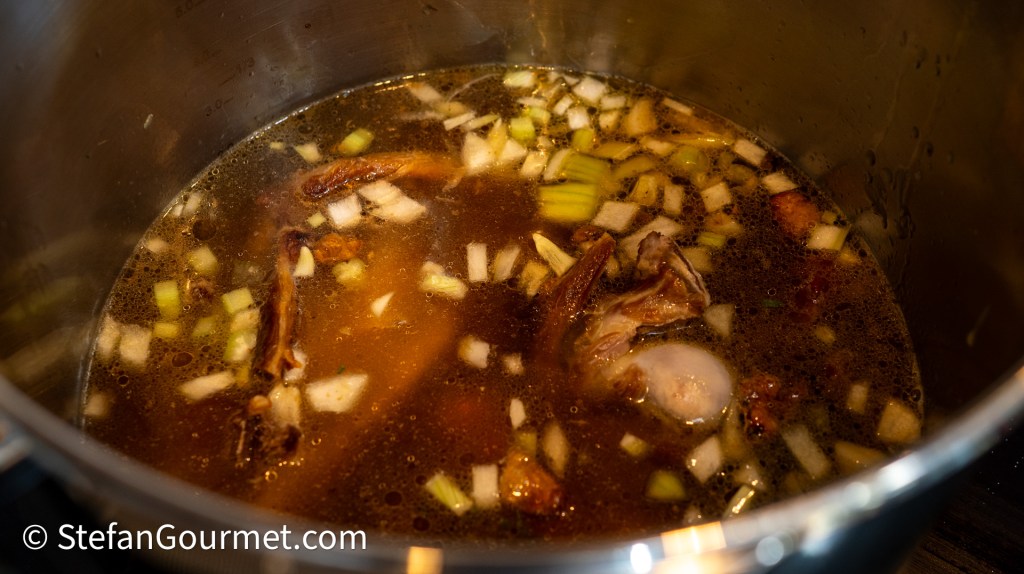
Add the water from the roasting tray to the stock pot or pressure cooker. Add just enough additional cold water to barely cover everything.
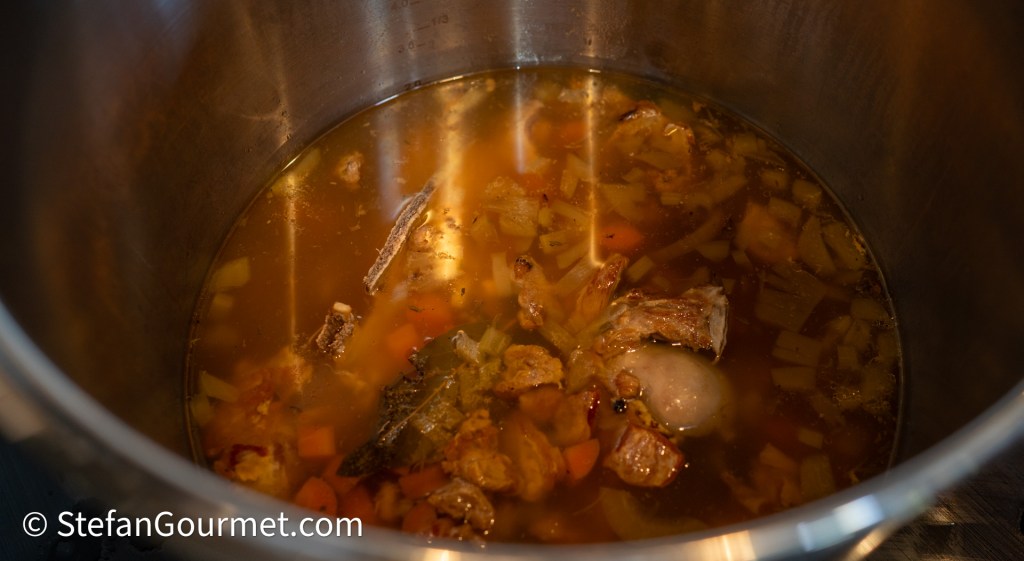
Cover, bring to a boil, and allow to simmer for 3 hours. Or bring to pressure, and pressure cook for 1 hour and 30 minutes.

Strain the stock through a fine sieve, and discard the solids.

Allow the stock to cool completely. A solid layer of fat will form on top.
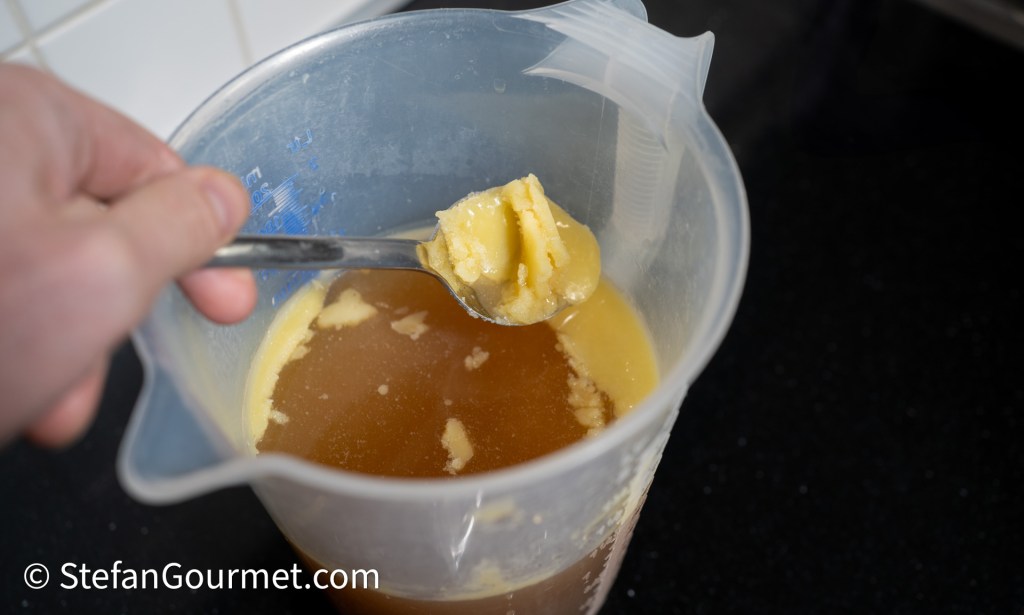
Spoon off the fat and reserve it for another use, or to brown the lamb for this recipe (but then you would have to start with the stock and making everything will take about a day longer as the stock takes quite some time to cool off).
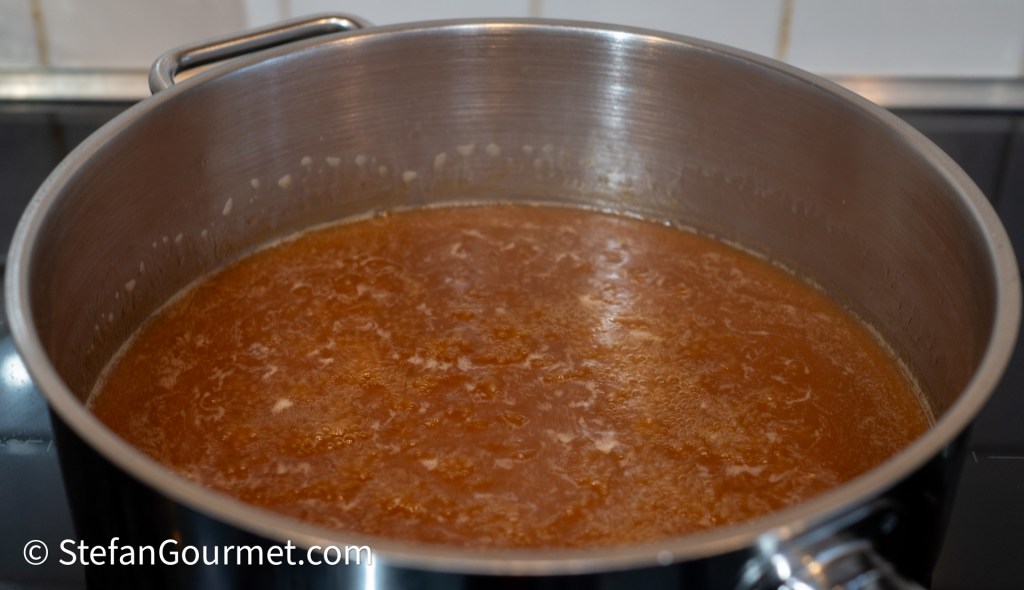
Pour the stock into a low wide pan, bring to a boil, reduce the heat to a simmer, and allow to simmer…
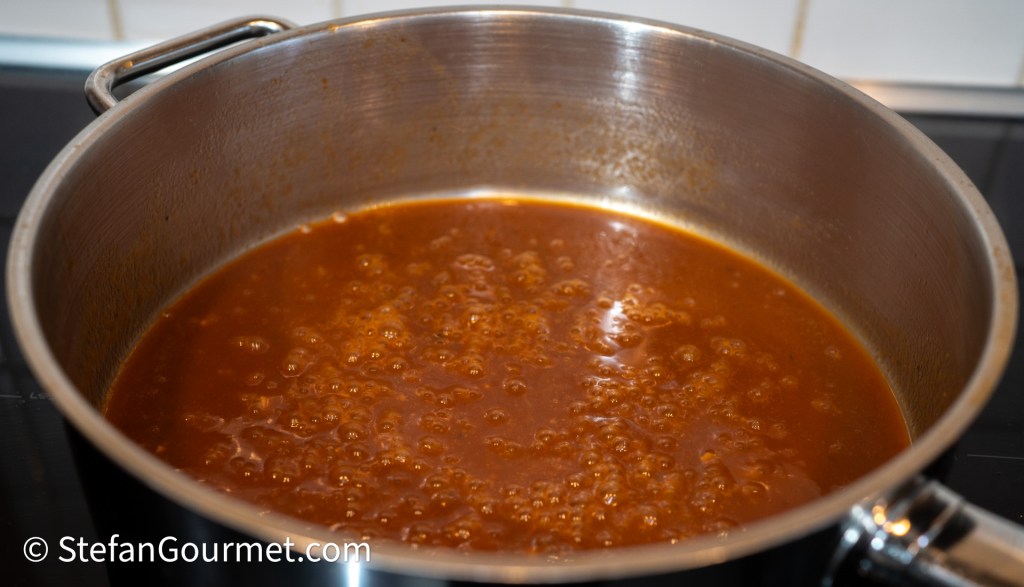
…until it has been reduced to demi glace consistency. Reserve the reduced stock until the sous vide cooking has finished. If you are cooking the stew the traditional way on the stovetop, then use the stock to cover the meat without reducing the stock first.

When the lamb has finished cooking sous vide…
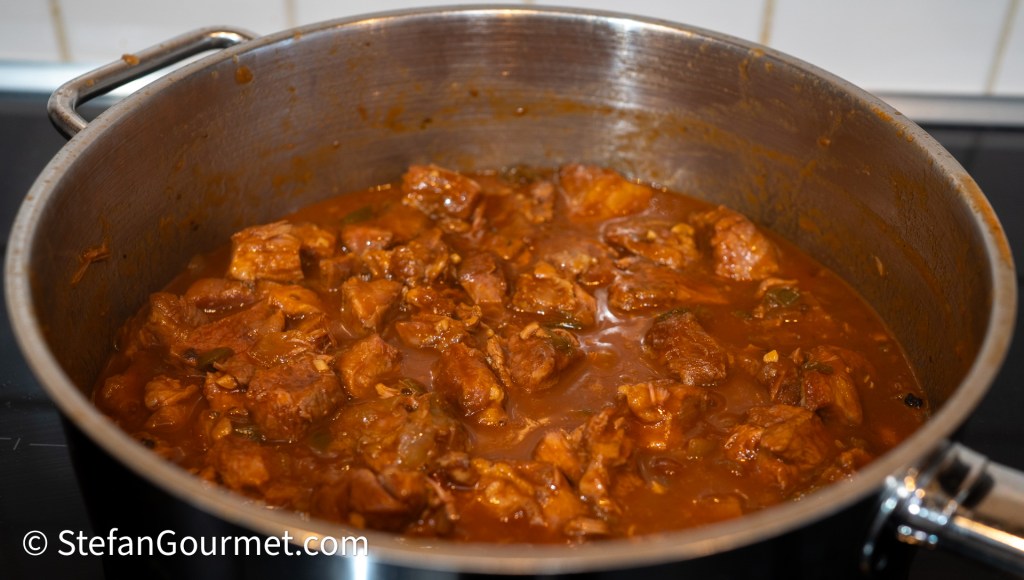
…add the contents of the bags to the reduced lamb stock, and stir to mix over very low heat. The reduced stock should boil just before you add the meat, but it should not boil again after you add the meat, as that would dry out the meat. Taste and adjust the seasoning with salt and spicy smoked paprika.

Serve at once on preheated plates, sprinkled with parsley and with nice crusty bread on the side to dip up the sauce.
Wine pairing
An obvious pairing for this dish is a red Rioja, preferably Reserva or Gran Reserva as the aging makes the wines more adapted to a stew (young Rioja like Crianza is more suitable for grilled meat). Heavier Spanish reds like Ribera del Duero, Priorat, Toro, or Monastrell would be too powerful.


This would definitely please the lamb lovers in our family.
LikeLiked by 1 person
As lamb is my favourite meat this recipe naturally is of interest! The ingredients are classic and my choice leans to more spicy but stovetop is more my way of making such. Must wander to the blog from where you got your inspiration . . . 🙂 !
LikeLiked by 1 person
What a fabulous recipe!!!
LikeLiked by 1 person